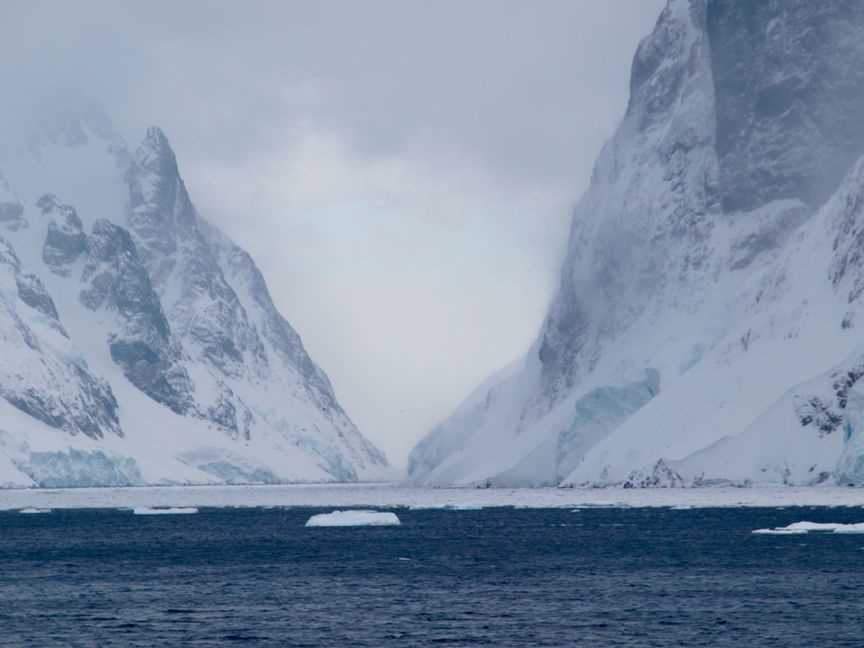Antarctic expedition plans are only valuable as a basis from which to start the process of adapting to changing weather and ice conditions, and that is how our day began this morning before breakfast. As we began our planned transit of the dramatic Lemaire Channel, the wind was howling and the snow swirling among the dark, craggy mountains lining the narrow ribbon of
We quickly moved to the Briand Fjord in Flandres Bay, protected from the winds and highlighted by broken sun and sky for a morning of Zodiac cruising among icebergs and towering rocky bluffs covered in ice and snow. The Peninsula Ice Sheet here pours out through the Bolton Glacier, which in eons past carved the deep fjord. In addition to the fractured ice on land and in the sea, we had great views of a lazing crabeater seal, humpback whale, and many diving, swimming, porpoising gentoo penguins.
Then we headed north through the Gerlache Strait, named for the leader of the Belgian Antarctic Expedition which explored this region in 1898. Our next best option for the afternoon was a landing and cruise in Orne Harbor, with stunning views of the strait and surrounding islands, as well as a remarkable chinstrap penguin colony high up on the rocky ridge. Constantly buffeted by wind and snow, only a penguin and the few lucky human visitors know why it is worth the climb.
After the seven course Blue Ice Antarctic gourmet dinner, we still had the most energetic part of the day ahead with the National Geographic Orion Crew Show and house band performing until the late hours of the evening. Such a wonderful crew, they made sure that no one went to bed without a smile and at least a little bit of dancing fever in their shoes.







